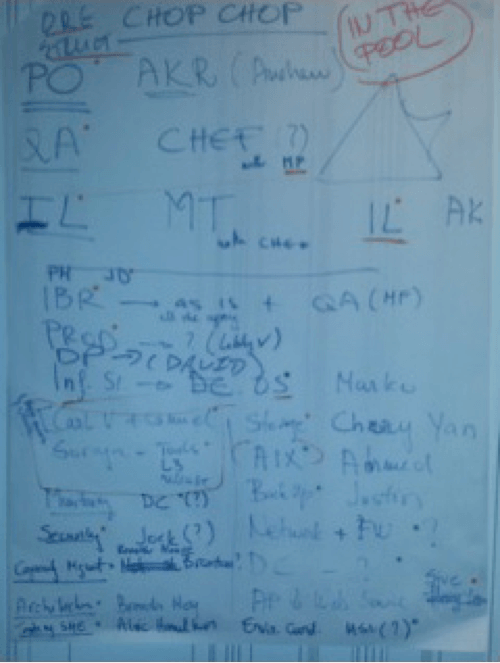This is the third entry in our ongoing, bi-weekly series examining our customer Standard Bank’s DevOps journey. You can read the first entry here, the second post here, and continue below for part three.
Guiding Principles and the Team
The last post talked about how Standard Bank came up with an overall mission statement and plan for their pilot project, the prepaid feature. This post focuses on the guiding principles behind the project and the team that would implement and test the prepaid feature.
The group wanted some principles that would guide the team and the project as a whole. Dawie said, “The first principle of our journey is moving quality to the left.” By this he meant that everything had to have quality built into it from the outset, and the process had to be repeatable and as automated as possible. Speed would follow as a logical consequence of the automation. Everything the team did would be in service to that goal.
Here are the actual principles that Standard Bank adopted:
- Don’t be a chop.
- Velocity is your guide—just do it.
- Perform blameless postmortems.
- Think as a lean startup.
- No pets, only cattle.
- Fail fast, fail forward.
- Practice trust and respect.
- This is a partnership.
The group put these principles in practice immediately. Some people were worried that they didn’t have enough resources and people to take on anything new. For example, there weren’t enough firewall experts to run normal operations as well as be part of the DevOps team. Another issue was that people would get into detailed discussions of how complex the infrastructure was and not make any progress.
Sometimes the group resolved problems quickly. Sometimes, Chef helped with the process by bringing up the guiding principles, such as having blameless postmortems and thinking like an agile organization. Problems with money or resources could be discussed with the executives who were committed to making the project a success. “How many people do you need to handle the firewalls? One hundred? Two hundred?” “Oh no, we need two people.” “Done. Next question.” The group was determined to move at velocity.
Structuring the team highlighted one of the challenges of creating a DevOps-centric organization within an existing organization where everyone is already very busy. How do you juggle everyone’s responsibilities and are you willing to dedicate some people to the new project? If you do that, what happens to their existing workload?

The group decided to have a core team who would only work on the prepaid feature. Then, there would be people who, while still part of the core team, would when necessary go back to other parts of the organization. Finally, there were people who did the mainstream work who would be pulled in as required.
The team was a large one, and included people from many disciplines across Standard Bank. Just a few of these areas were security, storage, monitoring, application services, infrastructure and tools. You can see the complexity in this drawing, done during the meeting.
To emphasize the focus on velocity, the team’s name became the Chop Chop team. Of course, “chop chop” means “quickly” or “without delay.” To improve communication, people on the core team relocated to a space where they could all work together. To make their new home a welcoming place, they added a coffee maker and a popcorn machine. Of course, every great team needs a great t-shirt and the Chop Chop team was no exception.

As news and excitement about the team spread, this t-shirt became an item much in demand at Standard Bank.
In the next post we’ll detail Standard Bank’s new approaches to infrastructure.
